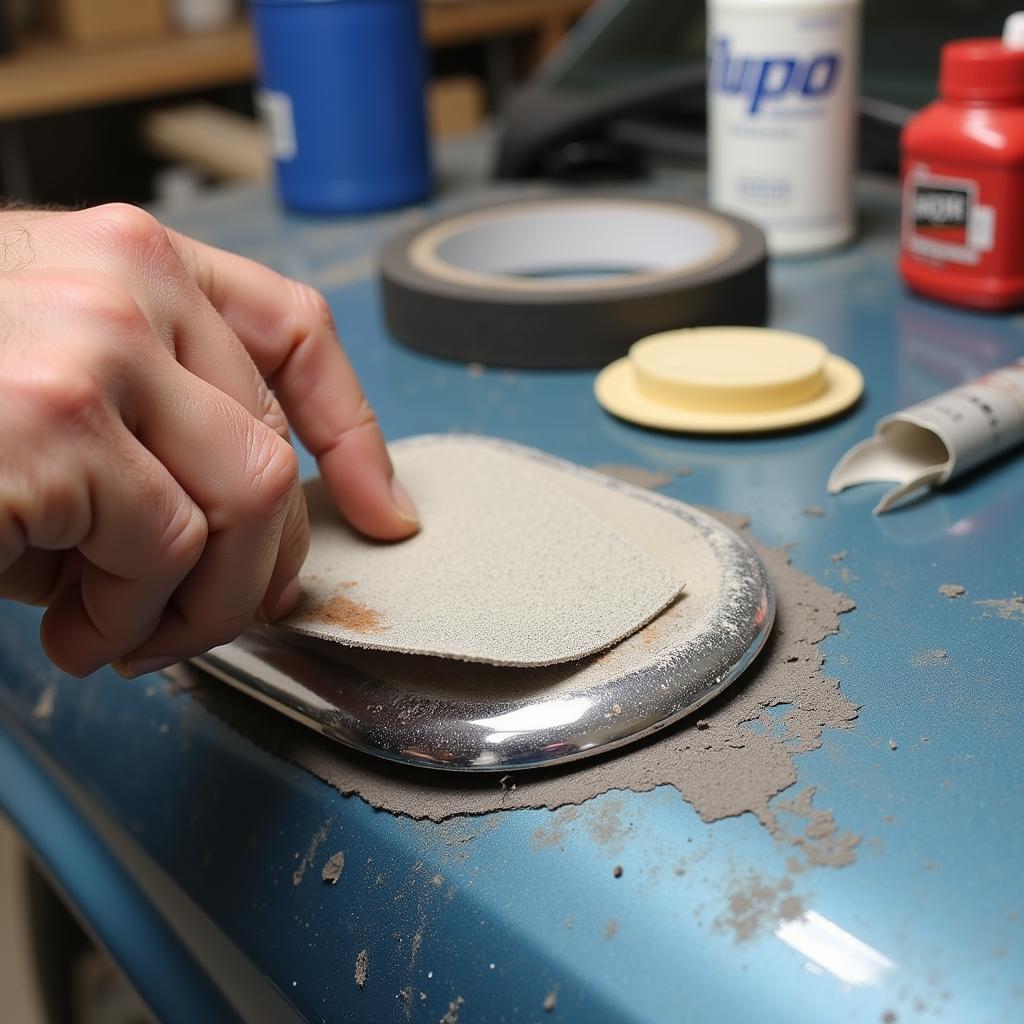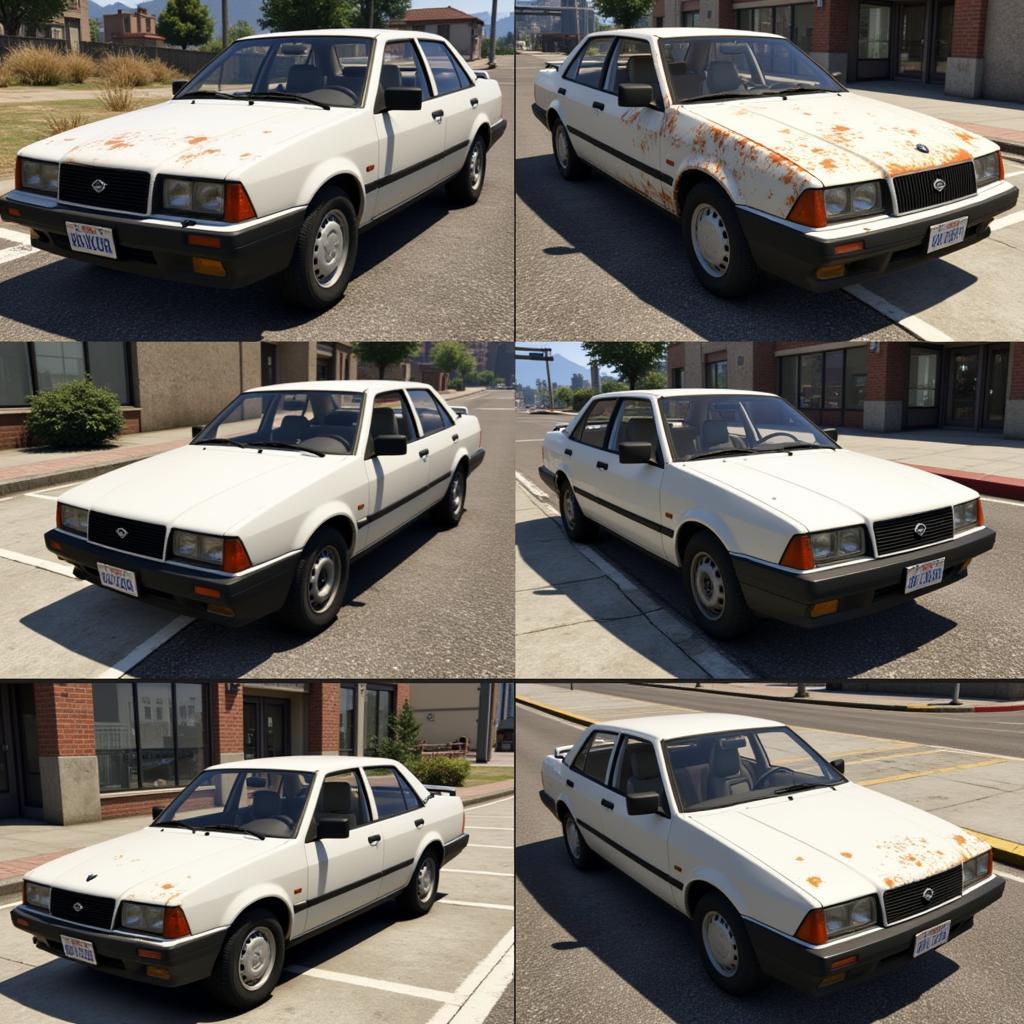Can A Flat Spot On A Car Tire Be Fixed? This is a common question for drivers who have experienced the frustration of leaving their car parked for an extended period, only to return to a noticeable thumping sensation while driving. Let’s delve into the intricacies of flat spots, exploring the causes, solutions, and prevention strategies.
It’s important to understand the difference between a flat spot and a flat tire. A flat tire involves a loss of air pressure due to a puncture or leak. A flat spot, on the other hand, is a deformation of the tire’s tread and sidewall caused by prolonged pressure in one area.
Understanding Flat Spots: Causes and Consequences
Flat spots occur when a vehicle’s weight rests on the same section of the tire for an extended period, especially in cold temperatures. The tire’s rubber loses its flexibility and conforms to the ground, creating a noticeable flat section. This can happen when a car is parked for weeks or months, or even just a few days in freezing weather. The severity of the flat spot depends on factors like the tire’s age, inflation pressure, temperature, and the weight of the vehicle. Consequences range from a mildly annoying vibration to significant handling problems and premature tire wear.
Can You Fix a Flat Spot on a Car Tire? The Short Answer
The fixability of a flat spot depends on its severity. Minor flat spots often disappear after the tires warm up and regain their flexibility through driving. However, more severe flat spots might be permanent, requiring tire replacement.
What to Do When You Discover a Flat Spot
First, check your tire pressure. Underinflation exacerbates flat spots. Inflate the tire to the recommended pressure listed on the sticker inside your driver-side doorjamb. If you’re unsure how to check your tire pressure, consider watching a video tutorial like those found on “how to fix a flat tire on a car youtube.” Then, drive the car for a while. Often, the heat generated through driving can restore the tire’s shape. If the problem persists after driving, take your car to a qualified tire technician for professional assessment. They can determine whether the tire needs to be replaced or if other solutions, like tire shaving, are viable. Speaking of bent rims, learn more about “how to fix a bent car tire rim”.
Preventing Flat Spots: Proactive Measures
The best way to deal with flat spots is to prevent them. Ensure your tires are properly inflated, especially before long-term parking. Consider overinflating your tires slightly within safe limits if you anticipate parking for an extended period in cold weather. You might also consider moving your car periodically, even a few feet, to change the tire’s contact point with the ground. If you’re struggling with parking in general, perhaps learning more about “cant park car in lines fixed” could be beneficial.
Expert Insights on Flat Spots
Johnathan Miller, a seasoned automotive engineer, offers this advice: “Regular tire maintenance, including proper inflation and rotation, is crucial for preventing flat spots and maximizing tire lifespan.”
Sarah Chen, a tire specialist with over 20 years of experience, adds, “Don’t underestimate the impact of temperature on your tires. Cold weather can significantly increase the risk of flat spots, especially for underinflated tires.” She also suggests watching movies like “a walk to remember fixing car scene” for a bit of car repair inspiration. If you’re wondering “the quarry can you fix the car,” know that in real life, professional help is often necessary.
How long does it take for a flat spot to go away?
Minor flat spots might disappear after 15-30 minutes of driving. More severe ones might require professional attention or even tire replacement.
Are flat spots dangerous?
While minor flat spots might just cause vibrations, severe ones can compromise handling and braking, posing safety risks.
Can I prevent flat spots in winter?
Yes, ensure proper tire inflation, move your car periodically, and consider slightly overinflating tires within safe limits before prolonged parking in cold weather.
What if the flat spot doesn’t go away?
If the flat spot persists after driving, consult a tire professional. They can assess the damage and recommend the best course of action.
How much does it cost to fix a flat spot?
The cost varies depending on the severity and solution. Sometimes, it’s free (driving resolves it). Other times, it could involve the cost of a new tire.
Can tire rotation prevent flat spots?
Tire rotation helps even out wear but doesn’t prevent flat spots from forming during extended parking.
Conclusion: Flat Spots – A Fixable Annoyance?
Can a flat spot on a car tire be fixed? Yes, in many cases. By understanding the causes, prevention strategies, and solutions, you can minimize the hassle and expense associated with flat spots. Remember, regular tire maintenance is key to ensuring a smooth, safe, and comfortable ride. For expert advice and assistance with your automotive needs, connect with us at AutoTipPro. Call us at +1 (641) 206-8880 or visit our office at 500 N St Mary’s St, San Antonio, TX 78205, United States.






Leave a Reply